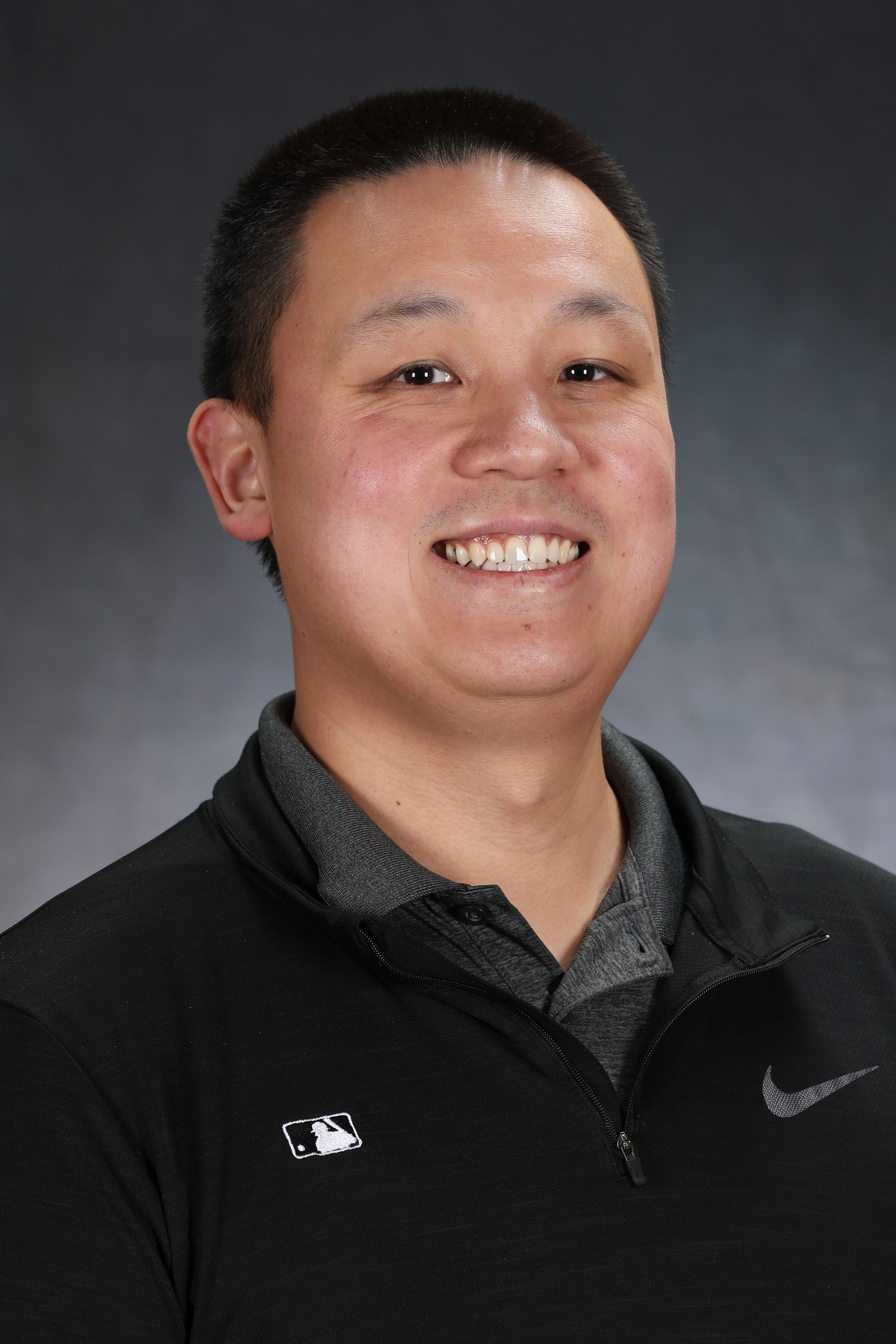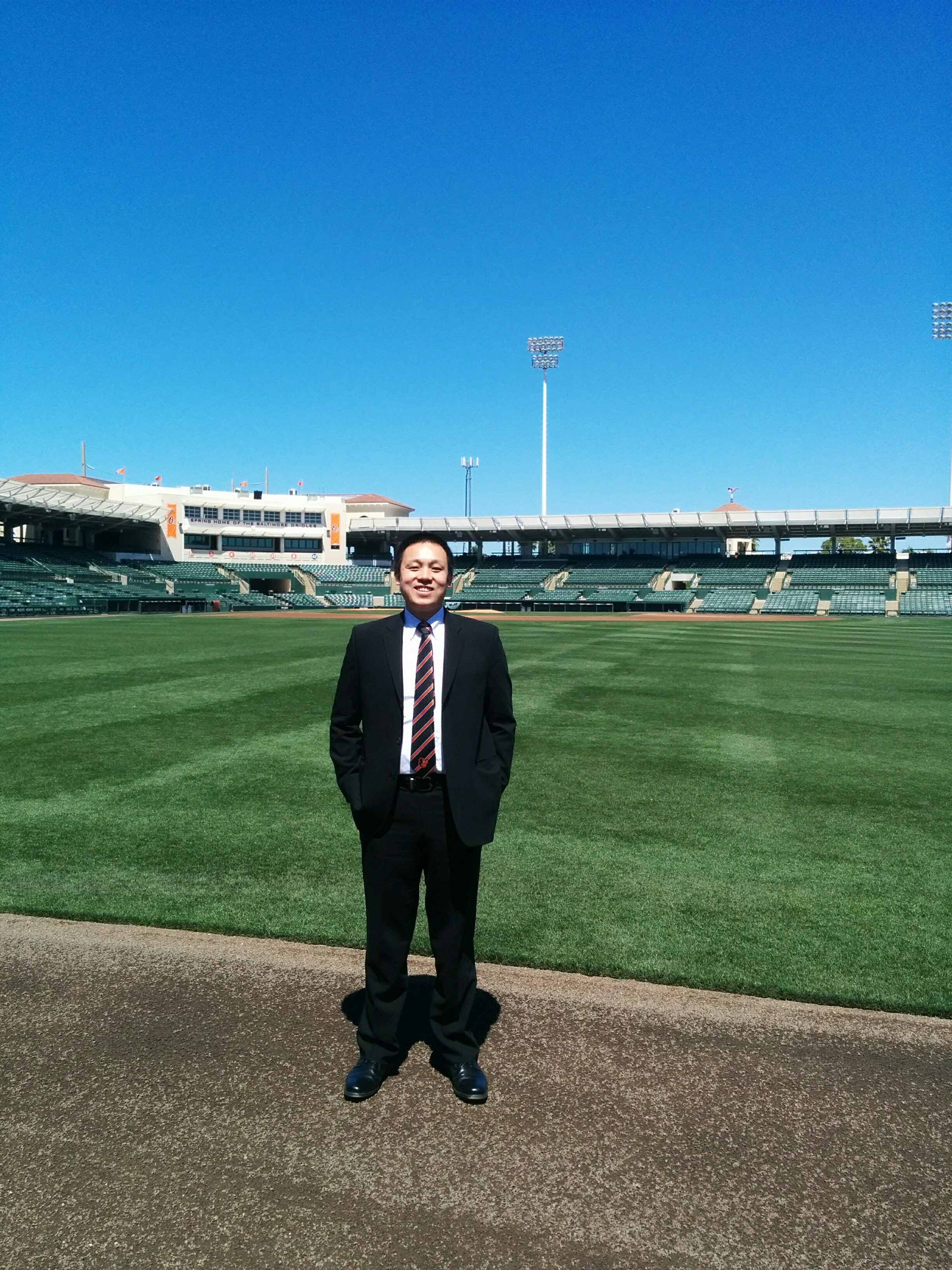From Math Major to Major League Baseball
Di Zou (B.S. ’09, mathematics) helps the Baltimore Orioles make data-driven decisions as the team’s director of baseball systems
Like many people born in Baltimore, Di Zou (B.S. ’09, mathematics) spent much of his childhood at Camden Yards watching the Baltimore Orioles play. He fondly recalls one of his favorite baseball moments: the second playoff game of the 2014 American League Division Series when the Orioles defeated the Detroit Tigers.

“That was about as exciting as I’ve seen Camden Yards,” Zou said.
Now, Zou’s workplace overlooks that same stadium, and he’s doing more to help his hometown team than merely cheering from the crowd. As the Orioles’ director of baseball systems, he builds software and tools to manage a mound of data—everything from the trajectory of a ball to the exact position of a pitcher’s wrist. Coaches, scouts and other baseball insiders use this data to strategize and make informed draft decisions.
“Now that the season has started and there are games every day, I make sure all of the data is getting imported and processed correctly,” Zou said. “We talk to coaches and scouts, and it’s really cool to see them use the reports and the data we provide.”
Despite his lifelong love for baseball, Zou never planned to work in professional sports. He always enjoyed working with numbers, so when he enrolled at the University of Maryland in 2006, he declared a major in mathematics.
It was only after taking a programming math class during his senior year at Maryland that Zou started considering careers that melded math with computer science. He later learned that his love of problem-solving could easily be applied to programming.
“I thought, ‘Well, if my favorite math class is actually a programming class, I should do programming as a job after college,” Zou said. “Programming is sort of like a puzzle. There are always challenges while writing code, and it’s a lot of fun to overcome these technological issues and get the computer to do something for you.”
After graduating, Zou landed his first programming job at the U.S. Army Research Laboratory in Aberdeen, Maryland, where he provided cloud-based computing support. In the years that followed, he went on to several software engineering positions—first in Baltimore and then in the Greater Boston area—and he picked up a variety of technical skills along the way.
“There’s usually a lot of learning on the job for programming,” Zou explained. “I learned different programming languages, computer science theory, how to efficiently do certain problems and tasks, different types of software architectures, and how to handle a lot of data.”
As a fan of both numbers and baseball, Zou started following baseball analytics in college after reading the book “Moneyball,” which told the true story of how the Oakland Athletics used player performance data to gain a competitive advantage. Zou has been an avid follower of analytics sites like Fangraphs and Baseball Prospectus ever since, and in 2017, that reading paid off when he saw a job posting for a developer in the Orioles’ analytics department.
“When I saw that, I thought, ‘Wow, this is right up my alley, and it would be cool to work for the Orioles,’” Zou said. “I love baseball and I love baseball analytics, so I figured, ‘Why not?’”

Zou ultimately got the job, joining two others on the analytics team. He hit the ground running and began building software and databases to help the Orioles manage a massive influx of player performance data. Zou was named the manager of baseball systems in 2019 and received another promotion to his current position in 2021.
During his six years with the Orioles, Zou has seen the team’s analytics department quadruple in size. He says the demand for more sophisticated data in professional sports has risen dramatically since he first delved into baseball analytics in college.
“When I graduated from the University of Maryland, sports analytics weren’t really a thing, and there were not many sports analytics jobs,” Zou said. “Those jobs really started to take off in the last six to eight years. It’s getting to the point where you can’t just have one person working on Excel—you need to write all this dedicated software to handle the volume of data coming to sports.”
That data continues to grow. Through the use of radar and optical tracking, the MLB collects data on every single pitch—and that’s just the start.
“At all moments, we know exactly where the ball is in space and time,” Zou said. “At the major league level, we get measurements 300 times per second, so we know how much the ball moves and how fast it is spinning.”
These technologies have become so advanced that the MLB now tracks the quick and subtle movements made by players’ arms and legs.
“As the pitcher throws the ball, we know how fast his arm is moving, how fast his leg is moving, where his ankle is, where his wrist is—that’s the type of data we get,” Zou said. “It’s hard to say what the next big development will be. From a biomechanics standpoint, it would be cool to know where a player’s fingers are on the ball. We don’t track that yet.”
Zou helps create and manage the systems that store this data, and he works closely with data scientists who build machine learning and statistical models to make that information relevant to coaches and scouts. He credits the mathematics program at UMD for giving him analytical skills that have helped him succeed in this role.
“It helped with a lot of the critical thinking needed for what I’ve been doing,” Zou said. “Also, since I now work with a lot of data scientists, the math background really helps with understanding what they do.”
While Zou’s job is full of technical challenges, he relishes the opportunity to put his problem-solving skills to the test and ultimately help the Orioles win more games. At the end of the day, as he sits in his office next to Camden Yards, Zou is exactly where he wants to be.
“I like to joke that I get paid to watch baseball all day,” Zou said. “That’s the best part.”







